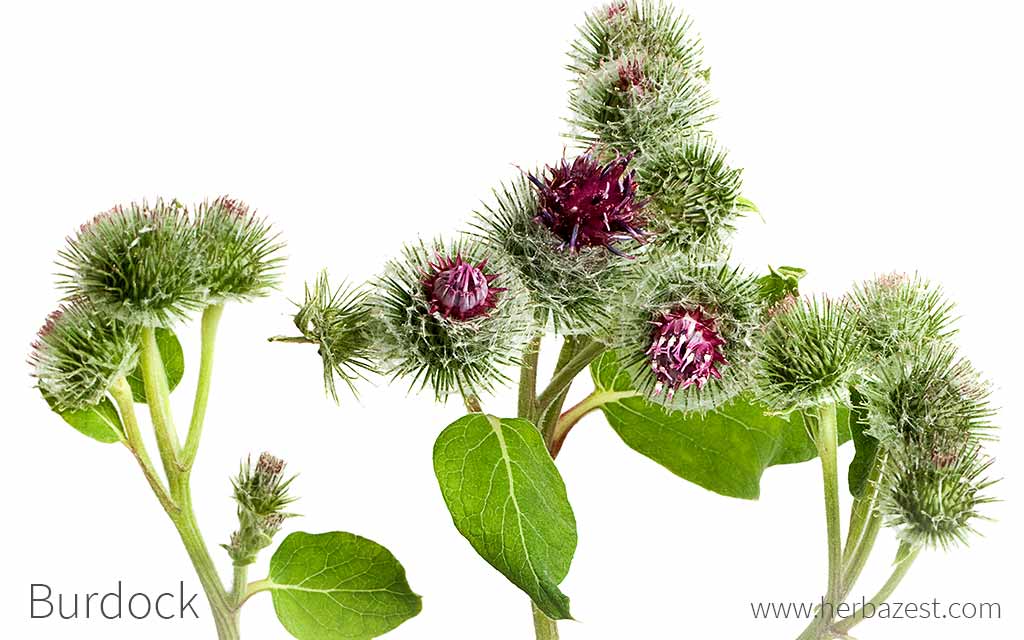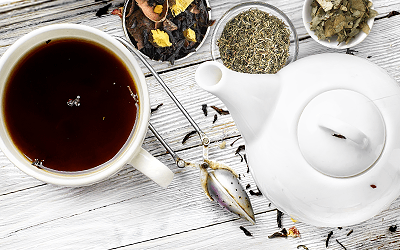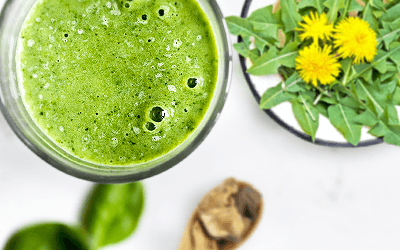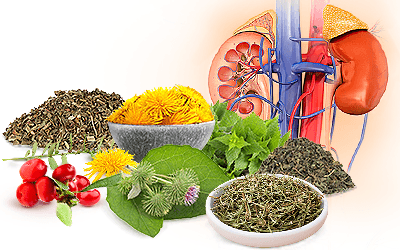Burdock, an herb endemic to Europe and Northern Asia, has been eaten as part of a regular diet for hundreds of years. The herb was domesticated during the Middle Ages, with the first records of its cultivation pointing to Western Europe. While the medicinal properties of this hardy food crop are still valued by herbalists, they are widely unknown by most people.
Burdock Medicinal Properties
- Medicinal action Cardioprotective, Hypoglycemic
- Key constituents Non-starch polysaccharides (inulin, glucoside-lappin, mucilage), phenols, flavonoids
- Ways to use Capsules, Food
- Medicinal rating (1) Very minor uses
- Safety ranking Use with caution
Health Benefits of Burdock
While it has been used medicinally for centuries, it is not as well-known for its numerous health benefits due to its status as a weed in many parts of the world. Regardless, burdock has effectively been used for:
Lowering blood sugar levels. Medicinal use of burdock can lower blood sugar levels, making it very useful for those with diabetes or other similar conditions.
Protecting heart health. The vasorelaxant properties of burdock has been shown to reduce hypertension, protecting cardiovascular health, as well as helping maintain healthy cholesterol levels.
In addition, burdock can help with other conditions, such as:
Aiding digestion. Taking burdock can help with digestive issues, such as constipation or diarrhea
Preventing liver damage. Some studies have shown that taking burdock medicinally can protect liver health, even preventing liver damage.
Regulating hormone levels. Burdock may help regulate estrogen levels in the body, especially for women.
Along with its modern medicinal uses, burdock as long been used in traditional medicinal for numerous purposes, including:
Eliminating water retention. It releases excessive fluids in the system by inducing urination.
Treating skin conditions. When applied topically, burdock is known for treating certain skin conditions, such as eczema, acne, and psoriasis.
Treating the kidneys and gall bladder. Considered a “blood purifier”, burdock helps eliminate toxins in the body.
How It Works
Burdock contains large amounts of non-starch polysaccharides such as inulin, glucoside-lappin, and mucilage. It is also a rich source of vitamins B2 (riboflavin), B6 (pyridoxine), B3 (niacin), C (ascorbic acid), and E (tocopherol). Some of its compounds, like vitamin C, give it antioxidant properties. It is this combination of nutrients that makes burdock such a popular herbal remedy.
Burdock owes its hypoglycemic properties on its high phenolic and flavonoid content.1 On the other hand, it has been shown to ameliorate vascular dysfunction by allowing relaxation and suppressing inflammation.2
The polysaccharides found in burdock root and leaves have strong anti-inflammatory actions3, along with diuretic and blood-purifying properties.4
Some preliminary studies suggest that burdock induce perspiration (diaphoretic action) and help renew skin tissues, although the full mechanisms of action behind these properties are still largely unknown.
Cinnamon, lupin, stevia, and soursop also have strong hypoglycemic properties, and similar cardioprotective benefits can be found in herbs like avocado, flax, olive, and quinoa.
Burdock Side Effects
Burdock is likely safe for most people when taken by mouth. However, for individuals with allergies or sensitivities to certain flowers, it can cause an allergic reaction. Burdock also looks similar to some deadly poisonous plants so it is not advisable to collect burdock from the wild.
Cautions
Burdock can slow blood clotting, so individuals with bleeding disorders should not consume it unless under medical supervision. For this reason, taking burdock prior to surgery is not recommended.
Because burdock lowers blood sugar levels, those who suffer from diabetes or similar conditions should use caution when taking burdock, so that it does not lower blood sugar levels too much.
Women who are pregnant or breastfeeding should consult a physician before taking burdock medicinally.

How to Consume Burdock
- Edible parts Root, Stem
- Taste Mildly bitter, Earthy
Burdock can be prepared in a number of ways. While it is beneficial in its culinary form, burdock's most concentrated components are in its medicinal forms of consumption.
Natural Forms
Raw. While it is not as common to consume it raw, burdock offers numerous medicinal benefits in this form, including protecting liver health and regulating estrogen levels in the body.
Cooked. While this is more common in Japan, Taiwan, Italy, Portugal, Brazil, and Korea, eating cooked burdock can provide numerous nutritional benefits. Along with its high vitamin C content, consuming cooked burdock can protect heart health.
Decoction. Burdock stems and roots can be boiled to concentrate their medicinal properties. In this medicinal form, it can prevent liver damage, as well as regulate estrogen levels in women.
Powder. Once dried and finely ground, burdock can be added to smoothies or other beverages for an added nutrient boost. It can also aid in digestion and eliminate water retention due to its diuretic properties.
Herbal Remedies & Supplements
Cream. In this water based preparation for topical application, burdock can treat skin problems, such as eczema, due to its emollient properties.
Extract. Product of a distillation process, burdock's extract can protect heart health thanks to its cardioprotective properties.
Salve. When applied topically as an oil based salve, burdock can treat numerous skin ailments, including psoriasis.
Tincture. When taken as an alcohol based tincture, burdock lowers blood sugar levels due to its hypoglycemic properties.
Capsules. In its most readily available medicinal form, burdock capsules have numerous benefits, including lowering blood sugar levels thanks to its hypoglycemic compounds, as well as protecting heart health.
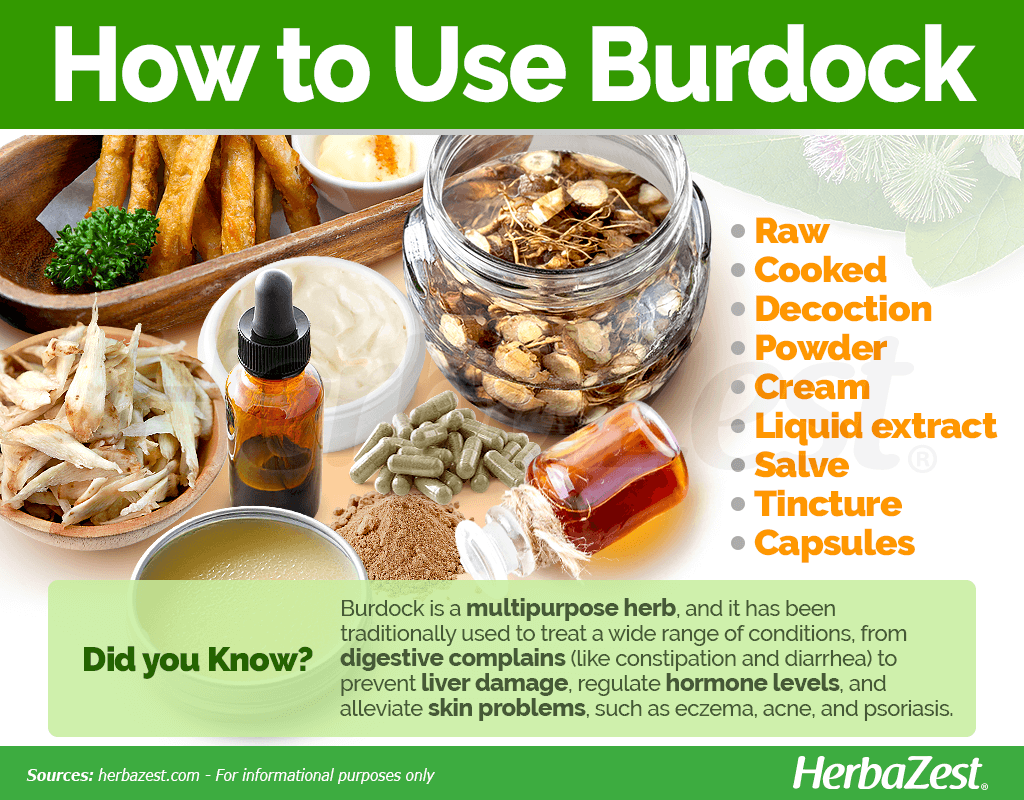
Growing
- Life cycle Biennial
- Harvested parts Roots, Stem
- Growing habitat Temperate climates
- Growing time two years
Burdock grows wild throughout the world with little to no assistance, making it incredibly easy to grow. However, in the case of burdock, the more attention you pay to this plant, the more it will thrive, growing deeper roots.
Growing Guidelines
For best results, growing it directly from the seed is recommended, since it will produce the highest germination rates.
If sown under cold climate conditions or during the fall season, burdock seeds yield best results if planted under one inch (2.5 cm) of soil, although during springtime only half an inch is usually necessary.
It is best if burdock is grown in a place with full sun, in well-drained and fertile soil, which should be cleared of stones and rocks to allow roots to develop.
Ideally, burdock should be planted in rows with an optimum spacing of six inches (15 cm) between each plant.
Soil must be kept moisturized for best results, and the use of fertilizers is recommended in order to accelerate its growth.
Roots should be harvested when they are approximately one inch (2.5 cm) thick and 10 inches (25 cm) deep. Fruits should be harvested only when already ripe.
Flowers and burrs should be continuously picked to promote new growth.
Additional Information
- Other uses Cosmetics
Plant Biology
Burdock, also known as gobo, edible burdock, lappa, beggar's buttons, thorny burr, or happy major, is a biennial plant that is commonly grown in the wild. Reaching heights up to 10 feet (3 m) tall, it has large, cordiform leaves that have a long petiole and are pubescent on the underside. It has purple flowers that are grouped in clusters and surrounded by many bracts, each of them forming into a curved hook, which allows them to stick to an animal's fur to be carried for long distances. The small seeds are contained inside of dried, spiny fruits.
Classification
Easily distinguished by its clinging seed heads, burdock is a member of the Asteraceae family, commonly referred to as the daisy, aster, or sunflower family, which contains more than 23,000 species spread across 1,620 genera. It is an economically important family, providing other herbs such as artichokes, chicory, dandelion, goldenrod, yarrow, and milk thistle.
Varieties and Subspecies of Burdock
Arctium lappa is one species of the Arctium genus. Native to Asia, Arctium's various species now grow worldwide. The plants in this genus typically have dark green leaves. As well as A. lappa (greater burdock), A. minus (lesser burdock) and A. tomentosum (downy burdock) belong to this genus.
Historical Information
First used in ancient Chinese medicine, the seeds were known as niupangzi and were used to expel wind-heat that accompanies cough, fever, sore throat, arthritis, rheumatism, anorexia nervosa, and various gastrointestinal disorders. It eventually spread to Europe, where it was used to treat certain types of cancer, as well as syphilis.
In the 1940s, burdock inspired the invention of Velcro after a Swiss inventor grew curious about how it stuck to people's clothes.
Leo Tolstoy and Emily Dickinson have both referenced burdock in their writings.
Economic Data
Burdock root is an economically relevant herb throughout the world and is popular in certain countries as a flavor enhancer, and in others as a medicinal herb. After a slump in popularity, burdock began garnering more importance during the second half of the 20th century, when it was a key part of the popular macrobiotic diet.
Other Uses of Burdock
Cosmetic industry. Burdock is widely used in cosmetics, shampoos, and hair care products. It is thought by some that rubbing burdock onto the scalp can help towards preventing baldness.
Sources
- African Journal of Biotechnology, Antidiabetic effect of bur dock ( Arctium lappa L.) root ethanolic extract on streptozotocin - induced diabetic rats, 212
- BMC Complementary and Alternative Medicine, Antioxidative and in vitro antiproliferative activity of Arctium lappa root extracts, 2011 | Effect of aqueous extract of Arctium lappa L. (burdock) roots on the sexual behavior of male rats, 2012
- Inflammopharmacology, A review of the pharmacological effects of Arctium lappa (burdock), 2010
- Journal of Cosmetic Dermatology, Natural Arctium lappa fruit extract improves the clinical signs of aging skin, 2009
- The Wild Flower Key, pp. 386-387
- University of Maryland, Burdock
- Encyclopedia of Herbal Medicine, p. 65
- Rosemary Gladstar's Herbal Recipes for Vibrant Health, pp. 19 - 32
- Journal of Alternative and Complementary Medicine, Trial of Essiac to ascertain its effect in women with breast cancer, 2006
- Journal of Ethnopharmacology, Anti-inflammatory intestinal activity of Arctium lappa L. (Asteraceae) in TNBS colitis model, 2013
- American Journal of Chinese Medicine, Anti-inflammatory and radical scavenge effects of Arctium lappa, 1996
- Ohio State University, Common Burdock, Arctium minus
- Phytochemical Analysis, Isolation and identification of arctiin and arctigenin in leaves of burdock (Arctium lappa L.) by polyamide column chromatography in combination with HPLC-ESI/MS, 2005
Footnotes:
- Avicenna Journal of Phytomedicine. (2017). Antidiabetic, hypolipidemic and hepatoprotective effects of Arctium lappa root's hydro-alcoholic extract on nicotinamide-streptozotocin induced type 2 model of diabetes in male mice. Retrieved May 22, 2023, from: https://www.ncbi.nlm.nih.gov/pmc/articles/PMC5355822/
- BCM Complementary Medicine and Therapies. (2012). Arctium lappa ameliorates endothelial dysfunction in rats fed with high fat/cholesterol diets. Retrieved May 22, 2023, from: https://www.ncbi.nlm.nih.gov/pmc/articles/PMC3517347/
- Frontiers in Nutrition. (2023). Extraction, structural characterization, and antioxidant activity of polysaccharides derived from Arctium lappa L. Retrieved May 22, 2023, from: https://www.ncbi.nlm.nih.gov/pmc/articles/PMC10070700/
- Plants (Basel). (2021). Arctium lappa and Arctium tomentosum, Sources of Arctii radix: Comparison of Anti-Lipoxygenase and Antioxidant Activity as well as the Chemical Composition of Extracts from Aerial Parts and from Roots. Retrieved May 22, 2023, from: https://www.ncbi.nlm.nih.gov/pmc/articles/PMC7824023/

